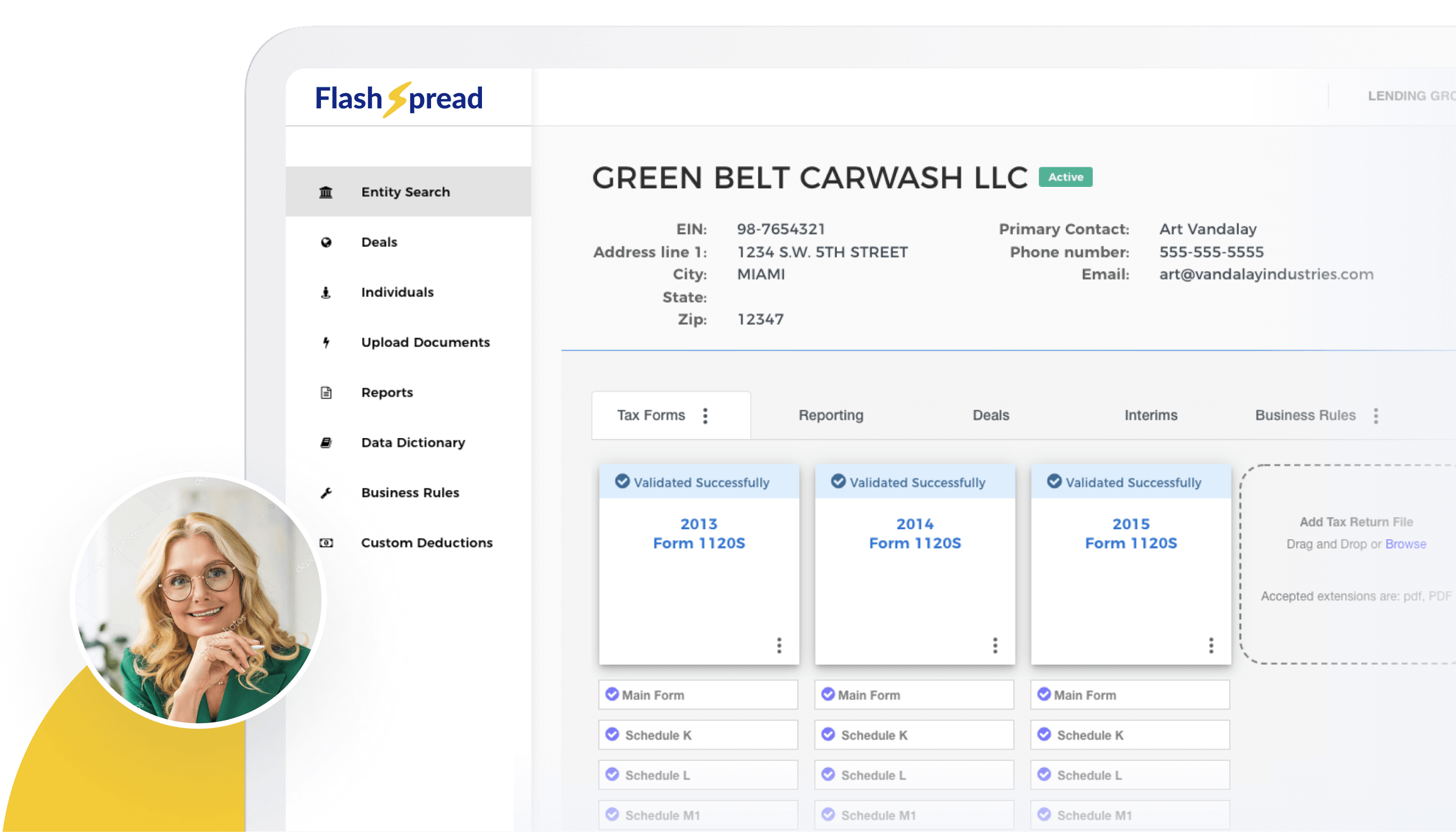In commercial lending, efficient collaboration among loan officers, credit analysts, underwriters, and risk managers is crucial for timely and accurate decision-making. However, traditional manual financial spreading methods are fraught with challenges.
According to Gupta, manual data extraction can consume between 35 and 120 minutes per dataset and is prone to errors, with studies indicating that there can be eight to ten incorrect entries per 100 data points.
These inefficiencies slow down the lending process and increase the risk of inaccuracies in financial assessments. Automated spreading emerges as a transformative solution, streamlining financial data analysis and fostering enhanced teamwork across lending teams.
Table of Contents
The Challenges of Traditional Financial Spreading
Financial statement spreading—extracting and analyzing financial data from borrower-provided documents—is a critical step in commercial lending. However, when done manually, this process presents several challenges:
- Time-consuming process: Traditional spreading requires significant manual data entry, formatting, and calculations. This slows down the loan approval process and creates bottlenecks in the workflow.
- Error-prone data handling: Manually inputting data into spreadsheets increases the risk of errors, which can lead to inaccurate financial assessments and potential lending risks.
- Lack of standardization: Analysts may use varying methods to spread financials, leading to data interpretation and reporting inconsistencies.
- Limited collaboration and transparency: Manual spreadsheets often reside on individual computers or require emailing files back and forth, making real-time collaboration difficult. This creates communication gaps and slows decision-making.
- Regulatory and compliance risks: Ensuring compliance with regulatory requirements is challenging when financial data is manually managed, as it lacks audit trails and standardization. Automated spreading solves these challenges by enabling teams to work together more efficiently while maintaining accuracy, consistency, and compliance.
How Automated Spreading Enhances Team Collaboration
Automated spreading solutions leverage artificial intelligence (AI) and machine learning (ML) to extract, analyze, and categorize financial data instantly. By integrating such technology into commercial lending workflows, institutions unlock the following collaborative benefits:
1. Real-Time Data Sharing for Seamless Communication
One of the biggest hurdles in manual financial spreading is the lack of real-time access to data. Automated spreading platforms centralize financial information, allowing all stakeholders—loan officers, underwriters, credit analysts, and risk managers—to access and review the same dataset simultaneously.
- Team members can view live updates and changes in real time.
- Comments and annotations can be added directly to financial statements.
- Decision-makers gain instant visibility into key financial metrics.
This real-time data sharing eliminates the inefficiencies of emailing spreadsheets back and forth, ensuring that teams stay aligned throughout the lending process.
2. Increased Accuracy and Reduced Risk of Errors
Automated spreading eliminates human errors associated with manual data entry. AI-driven solutions accurately extract and categorize financial information from borrower documents, reducing discrepancies and ensuring data integrity.
- Automated checks and validations ensure accurate financial calculations.
- Standardized data formatting improves consistency across reports.
- Error-free financials enable teams to make informed lending decisions confidently.
Automated spreading enhances trust among team members by improving data accuracy, allowing them to focus on high-value tasks rather than double-checking figures.
3. Standardized Financial Analysis for Better Decision-Making
Commercial lending teams often struggle with inconsistent financial analysis due to varying methodologies among analysts. Automated spreading ensures standardization by applying uniform data interpretation and credit risk models.
- Credit analysts receive financial data in a consistent, structured format.
- Loan officers can quickly compare borrower financials across applications.
- Risk managers can assess loan portfolios using standardized metrics.
This consistency enables teams to make faster, more reliable lending decisions while minimizing subjective biases in financial evaluations.
4. Faster Loan Processing and Improved Efficiency
The automation of financial statement spreading significantly reduces the time required for loan processing. What once took hours or days can now be accomplished in minutes, allowing teams to move applications through the pipeline more efficiently.
Subscribe to BeSmartee 's Digital Mortgage Blog to receive:
- Mortgage Industry Insights
- Security & Compliance Updates
- Q&A's Featuring Mortgage & Technology Experts
- Loan officers can initiate loan applications faster.
- Underwriters can assess financials without manual data manipulation.
- Credit committees can review comprehensive reports with minimal delays.
With faster processing, lenders can improve borrower experience and gain a competitive edge in the market.
5. Enhanced Compliance and Auditability
Regulatory compliance is a key concern in commercial lending, and automated spreading helps maintain transparency and audit readiness.
- Every financial statement is logged, creating an audit trail.
- Automated compliance checks flag potential regulatory concerns.
- Risk teams can easily access historical data for reporting and analysis.
Financial institutions mitigate regulatory risks and enhance overall operational security by ensuring compliance at every stage.
6. Integration with Loan Origination Systems (LOS) and Credit Risk Solutions
Modern automated spreading solutions integrate seamlessly with loan origination systems (LOS), credit risk solutions, and other financial tools. This integration allows for:
- Smooth data transfer between systems.
- Reduction of redundant data entry.
- Improved workflow automation across teams.
These integrations further enhance collaboration by ensuring that all departments work with the same up-to-date financial information.
The Future of Collaboration in Commercial Lending
The rise of automated spreading represents a fundamental shift in how commercial lending teams operate. As financial institutions embrace automation, they are improving efficiency and fostering a culture of collaboration, transparency, and data-driven decision-making.
The future of commercial lending will see even more significant advancements in AI-powered financial analysis, predictive credit risk modelling, and blockchain-based data security. Institutions that invest in automation today will be well-positioned to lead the industry tomorrow.
Streamline Your Lending Process with FlashSpread
BeSmartee’s FlashSpread solution is an innovative automated spreading technology designed to transform commercial lending workflows. By leveraging AI-powered financial spreading, FlashSpread eliminates manual data entry, enhances collaboration, and accelerates loan approvals.
With FlashSpread, your team can:
- Access real-time financial data for seamless collaboration.
- Reduce errors and standardize financial analysis.
- Speed up loan processing and improve efficiency.
- Ensure compliance with robust audit trails.
Ready to take your commercial lending operations to the next level? Contact us today and experience the power of automated spreading firsthand!




